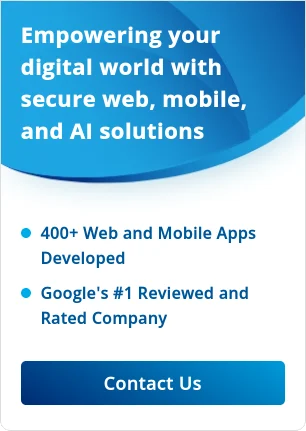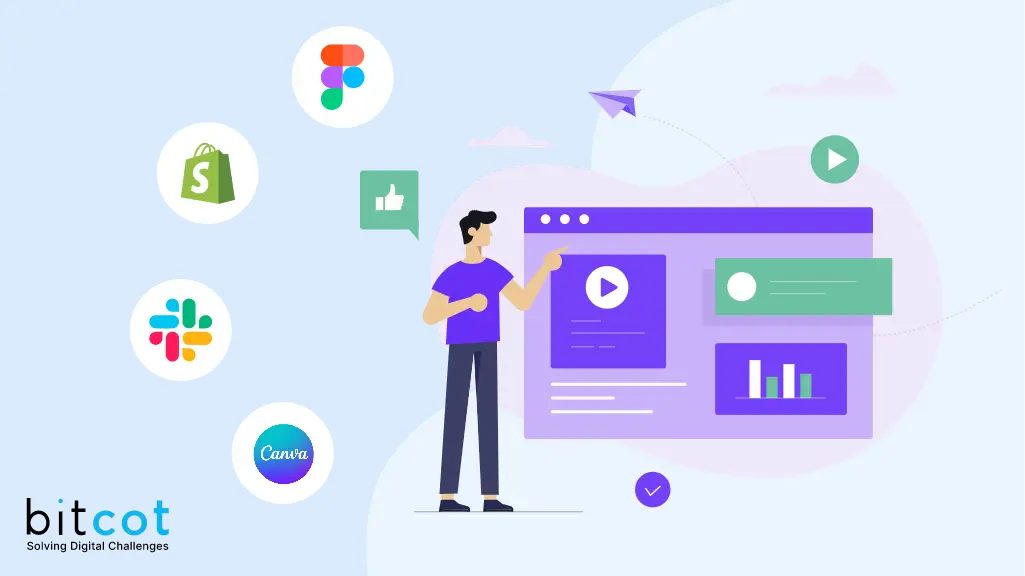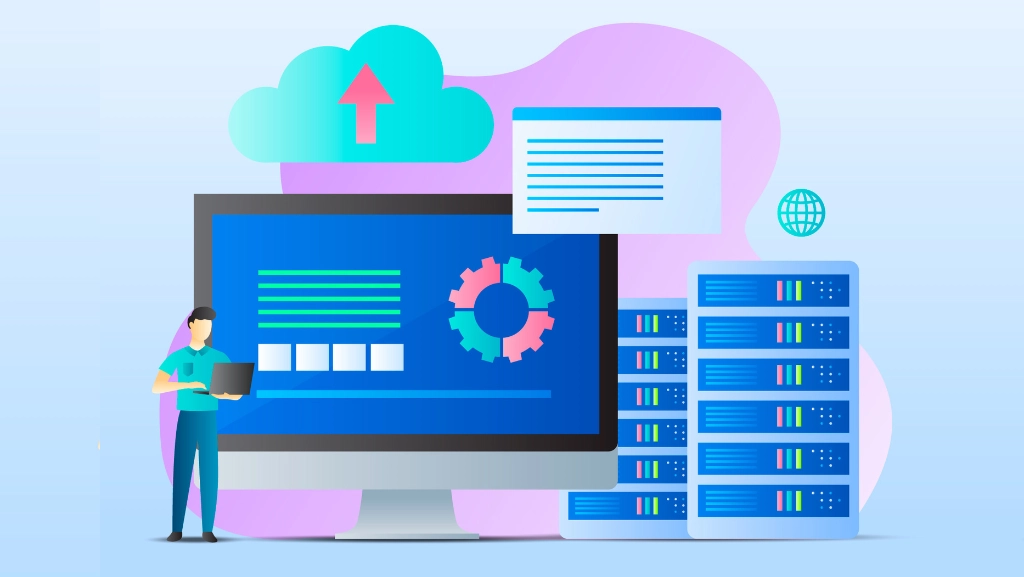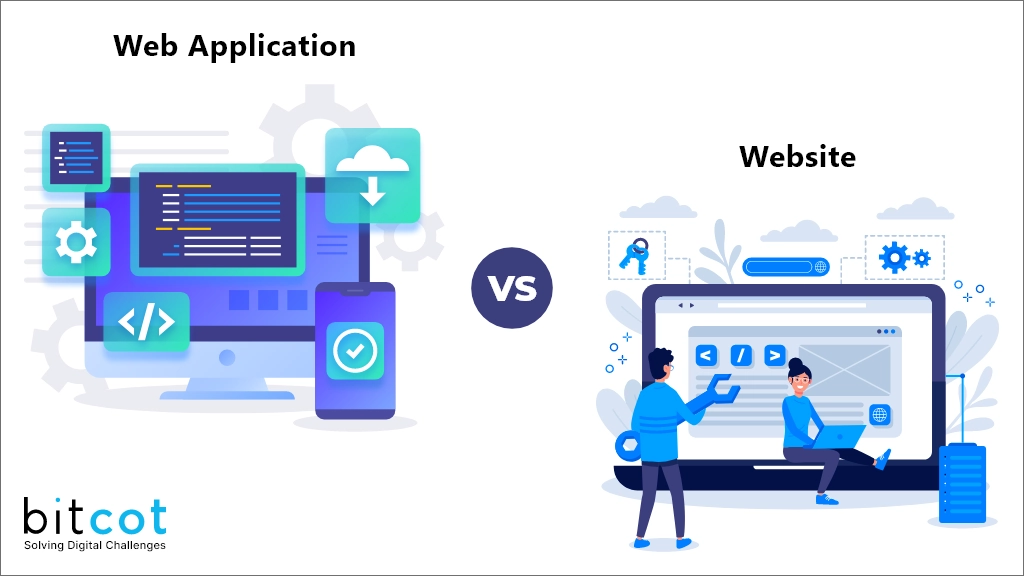
Deciding between a website or web application depends significantly on your specific goals and target features. Recent years have seen the line between basic websites and complex web apps blur especially.
Whereas websites traditionally contain primarily static pages with text and images, many modern sites offer web app-like interactivity powered by extensive backend coding and databases. However, web applications still differ by enabling deeper functionality than traditional desktop software.
For example, Google Docs, Slack, and Zoom are web applications – not basic websites. They leverage browser technology to deliver robust productivity capabilities through the cloud.
Also Read: 15 Best Web Application Design Examples for Inspiration
Progress App Developer research shows that the global web app market is projected to reach $354 billion by 2028. Driven by SaaS adoption and browser-based power, web apps will dominate cloud delivery. The same report found that 78% of developers now prioritize web performance as a critical app design principle.
With web technology advancing rapidly, the specific needs of your digital product determine whether an essential website or more advanced web application aligns best. Prudent technology planning reduces wasted effort by assessing must-have features, target users, capacity expectations, and other factors. An experienced web development partner Asking the right strategic questions upfront saves time and money while powering online success.
At BitCot, we have extensive expertise in developing websites and web applications. We can assist you in creating customized web solutions, guide the development process, equip you with the necessary information, and help you save time while achieving an exceptional online presence.
What is a Web Application?
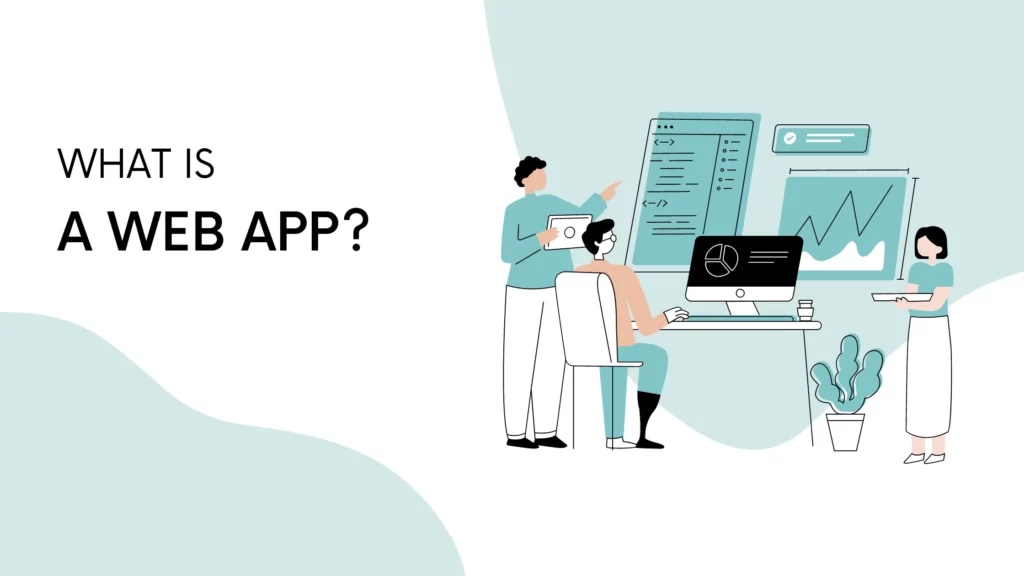 A web application, commonly known as a web app, is a software application accessed through web browsers, eliminating the need for installation. It functions over the internet, allowing users to perform specific tasks or access features without downloading the application locally. Web apps come in various types, catering to diverse needs, from collaborative tools to e-commerce platforms.
A web application, commonly known as a web app, is a software application accessed through web browsers, eliminating the need for installation. It functions over the internet, allowing users to perform specific tasks or access features without downloading the application locally. Web apps come in various types, catering to diverse needs, from collaborative tools to e-commerce platforms.
a) Types of web applications:
There are various types of web applications, including:
i) E-commerce Applications: These web apps facilitate online shopping and transactions, allowing users to browse products, add items to a shopping cart, and make secure payments.
ii) Social Networking Platforms: Web apps like Facebook, Twitter, and LinkedIn enable users to connect, share content, communicate, and engage in social interactions.
iii) Productivity Tools: Web-based productivity applications like Google Docs, Trello, and Slack provide users with tools for collaboration, document creation, project management, and communication.
iv) Customer Relationship Management (CRM) Systems: CRM web applications like Salesforce and HubSpot assist businesses in managing customer relationships, tracking sales, and improving customer interactions.
b) Advantages of web application:
Web applications offer several advantages, including:
i) Cross-Platform Compatibility: Web apps can be accessed from any device with a web browser, regardless of the operating system, making them highly flexible and accessible.
ii) Easy Maintenance and Updates: Since web apps are centrally hosted, updates and maintenance can be performed on the server side, ensuring all users have access to the latest version simultaneously.
iii) Seamless Integration: Web apps can integrate with other systems and APIs, allowing easy data exchange and interoperability with existing software and services.
iv) Accessibility: Users can access web apps from anywhere with an internet connection, enabling remote work, collaboration, and on-the-go productivity.
c) Examples of web applications:
Prominent examples of web applications include:
i) Gmail: A web-based email service developed by Google, offering users access to their emails, contacts, and calendars from any device with an internet connection.
ii) Amazon: An e-commerce platform that provides a wide range of products for online purchase, featuring user-friendly search, browsing, and secure payment functionalities.
iii) Asana: A web-based project management tool that allows teams to collaborate, assign tasks, track progress, and manage projects efficiently.
What is a Website?
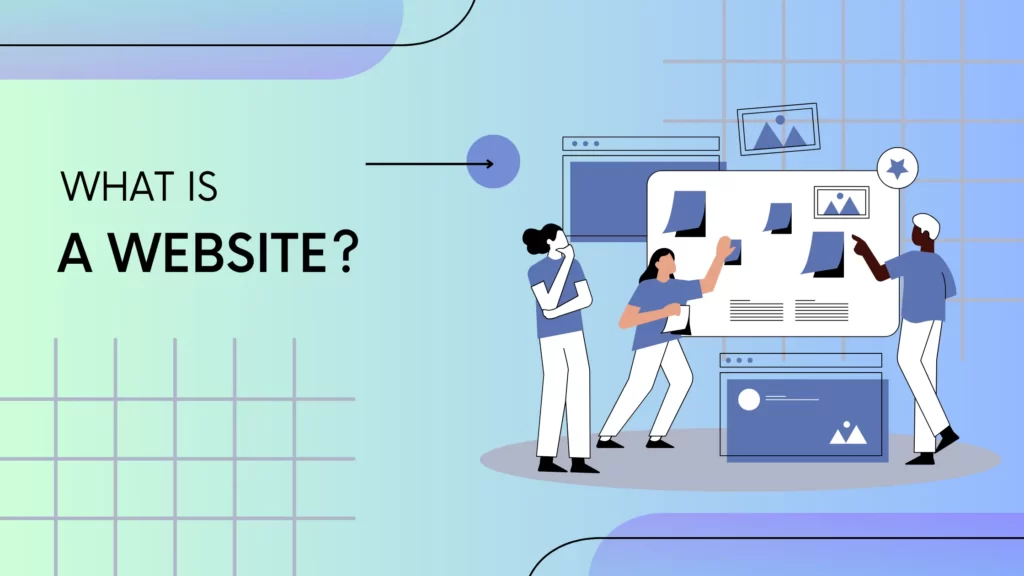 A website is a digital platform accessible through web browsers, comprising interconnected pages that convey information or provide services. Unlike web applications, websites are primarily informational, offering content for users to consume. Websites serve diverse purposes, from personal blogs to corporate portals, and they are categorized into various types based on their functions.
A website is a digital platform accessible through web browsers, comprising interconnected pages that convey information or provide services. Unlike web applications, websites are primarily informational, offering content for users to consume. Websites serve diverse purposes, from personal blogs to corporate portals, and they are categorized into various types based on their functions.
a) Types of websites:
There are different types of websites catering to various purposes, including:
i) Static Websites: These websites have fixed content that rarely changes. They are typically informational and serve as online brochures or portfolios.
ii) Dynamic Websites: Dynamic websites generate content dynamically, often pulling information from databases or external sources. They can include features like user log in, personalized content, and interactive elements.
iii) E-commerce Websites: E-commerce websites enable online buying and selling, showcasing products, processing transactions, and managing inventory.
iv) Blogging Websites: Blogging platforms host articles, posts, and multimedia content, allowing individuals or businesses to share information, opinions, and insights with their audience.
b) Advantages of the website:
Websites offer several advantages, including:
i) Online Presence: Websites provide a digital presence for individuals, businesses, organizations, or brands, allowing them to showcase their products, services, or ideas to a global audience.
ii) Information Dissemination: Websites are a platform to share information, news, updates, and resources with visitors, offering a central content repository.
iii) Communication and Interaction: Websites facilitate communication between businesses and customers through contact forms, live chat, comment sections, or social media integration.
iv) Branding and Marketing: Websites enable businesses to establish their brand identity, convey their values, and promote their products or services through visual design, content marketing, and search engine optimization (SEO).
c) Examples of websites:
Well-known examples of websites include:
i) Wikipedia: An online encyclopedia that provides user-generated content on various topics, offering information, references, and citations.
ii) Airbnb: A platform that connects travelers with hosts, allowing users to book accommodations and explore unique travel experiences.
iii) BBC News: The British Broadcasting Corporation (BBC) website provides news articles, videos, and multimedia content on various topics and regions.
iv) TED: A website hosting TED Talks featuring inspiring and informative talks by experts and thought leaders from diverse fields.
Web Application vs Website: What’s the Difference?🤔
Below is a comprehensive table outlining the differences between a Web Application and a Website:
| Feature | Web Application | Website |
| SimpleFunctionality | Performs specific tasks and interactions, often dynamic. | $20,000-$40,000+Primarily informational, offering content for consumption. |
| Interactivity | Highly interactive, allowing users to engage and perform actions. | Generally limited interactivity, focused on content presentation. |
| Purpose | Serves targeted functionalities, catering to specific user needs. | Conveys information, promotes a brand, or provides services. |
| User Engagement | Encourages active participation, with features like forms, real-time updates, and collaboration tools.. | Involves passive engagement, where users consume information without direct interaction. |
| Data Handling | Data Handling Often involves complex data processing and management, such as databases and user accounts.. | Primarily handles static content, with limited data processing needs. |
| Examples | Asana, Google Docs, E-commerce platforms like Shopify.. | Wikipedia, Blogs, Corporate informational sites. |
| Accessibility | May require user accounts and authentication for personalized experiences. | Generally accessible to all users without the need for accounts. |
| Updates | .Real-time updates are common to enhance functionality. | Updates typically involve adding or modifying content. |
| Development Complexity | Generally more complex, involving intricate coding and development for specific functionalities.. | Development is often more straightforward, focusing on content presentation. |
| Cross-Device Compatibility | May require responsive design to ensure usability across various devices.. | Typically designed to be accessible across different devices without extensive adaptations. |
Understanding these differences is crucial for businesses and individuals when deciding whether to develop a web application or a website based on their specific goals and user engagement requirements.
Web App vs Website: What Should You Choose For Your Business?
Choosing between a web app and a website is a pivotal decision for businesses, influencing their digital presence and user engagement. Here’s an exploration of the factors to consider when making this crucial choice:
Functionality and Interactivity:
- Web App: Ideal for businesses requiring specific functionalities and high interactivity. Web apps engage users with dynamic features, enabling tasks like collaboration, data processing, and real-time updates.
- Website: Suited for informational purposes where interactivity is limited. Websites excel in presenting content, promoting brands, and providing services without intricate user engagement.
Purpose and Target Audience:
- Web App: Tailored for targeted functionalities, serving specific user needs. It is ideal when active user participation and task-oriented interactions are central to the business model.
- Website: Primarily serves as an information hub, offering content for consumption. Suitable for businesses focused on brand promotion, information dissemination, or providing straightforward services.
User Engagement and Data Handling:
- Web App: Encourages active user engagement through features like forms, user accounts, and complex data handling. Well-suited for businesses requiring extensive data processing and management.
- Website: Involves passive engagement, where users consume information without intricate interactions. Effective for businesses with minimal data processing needs.
Accessibility and Updates:
- Web App: This may require user accounts for personalized experiences and real-time updates to enhance functionality. Ensures a more tailored and dynamic user experience.
- Website: Generally accessible to all users without the need for accounts. Updates typically involve adding or modifying content, making it suitable for businesses with less dynamic content needs.
Development Complexity and Cross-Device Compatibility:
- Web App: Involves intricate coding for specific functionalities, making development more complex. Responsive design is crucial for ensuring cross-device compatibility.
- Website: Development is often more straightforward, focusing on content presentation. Websites are designed to be accessible across different devices without extensive adaptations.
Ultimately, the choice between a web app and a website depends on the business’s goals, target audience, and the level of interactivity required. A web app may be ideal for companies seeking task-oriented interactions, while those focused on information dissemination may find a website more suitable. Combining both might offer a balanced and comprehensive digital strategy in many cases. It’s essential to carefully assess the business’s unique needs to make an informed decision that aligns with its objectives and user engagement requirements.
Making the Choice: BitCot Assists You in Deciding Between a Website and a Web App!
In the rapidly evolving digital landscape, the choice between a website and a web app can significantly impact your online presence. BitCot is your trusted web and mobile app development partner, offering expert assistance to navigate this crucial decision. Our approach begins by deeply understanding your business objectives, target audience, and required functionalities. We tailor our guidance to align your digital solution with your unique goals, ensuring a strategic fit for your brand.
Whether you seek a dynamic web app for active user engagement or an informative website for content presentation, BitCot’s expertise comes to the forefront. We guide you through the intricacies of functionality and interactivity, ensuring that your chosen solution perfectly complements your business model. Our seasoned developers handle the complexities of web app and website development, providing seamless solutions that capture the essence of your vision.
Moreover, our commitment extends beyond the present; we prioritize future-proofing your digital presence. Considering scalability, anticipated updates, and emerging technologies, BitCot ensures that your choice today is an investment in the longevity and success of your online platform. With BitCot by your side, choosing between a website and a web app becomes a strategic step towards a resilient and thriving digital presence.
Frequently Asked Questions
test
dfvfvgfgfgfgfgfgfggfh
dfdffd
fgfggffgh

